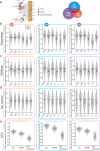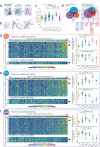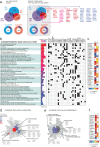Genes associated with cognitive ability and HAR show overlapping expression patterns in human cortical neuron types
- PMID: 37443107
- PMCID: PMC10345092
- DOI: 10.1038/s41467-023-39946-9
Genes associated with cognitive ability and HAR show overlapping expression patterns in human cortical neuron types
Abstract
GWAS have identified numerous genes associated with human cognition but their cell type expression profiles in the human brain are unknown. These genes overlap with human accelerated regions (HARs) implicated in human brain evolution and might act on the same biological processes. Here, we investigated whether these gene sets are expressed in adult human cortical neurons, and how their expression relates to neuronal function and structure. We find that these gene sets are preferentially expressed in L3 pyramidal neurons in middle temporal gyrus (MTG). Furthermore, neurons with higher expression had larger total dendritic length (TDL) and faster action potential (AP) kinetics, properties previously linked to intelligence. We identify a subset of genes associated with TDL or AP kinetics with predominantly synaptic functions and high abundance of HARs.
© 2023. The Author(s).
Conflict of interest statement
The authors declare no competing interests.
Figures





References
Publication types
MeSH terms
Grants and funding
LinkOut - more resources
Full Text Sources
Medical
Miscellaneous

